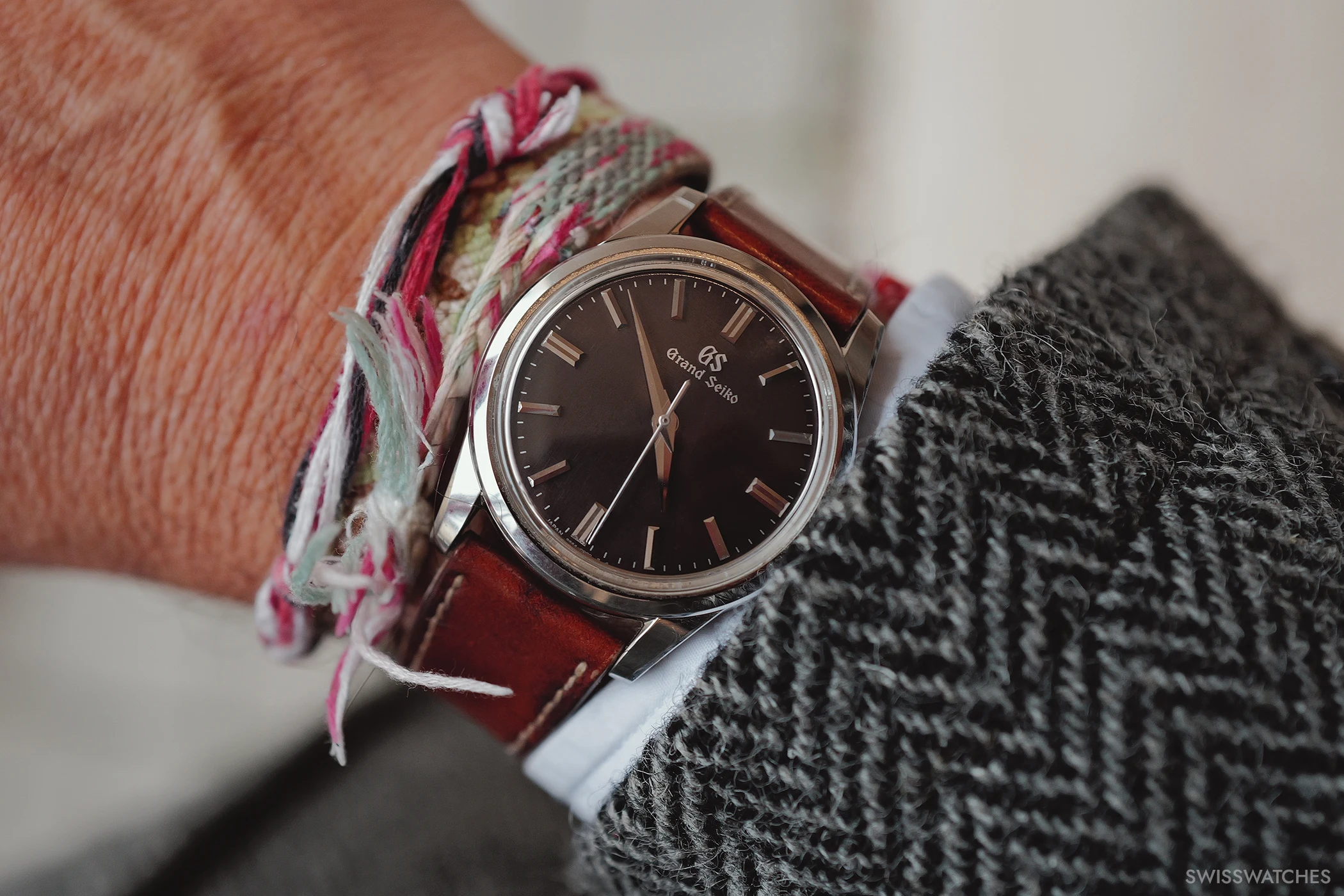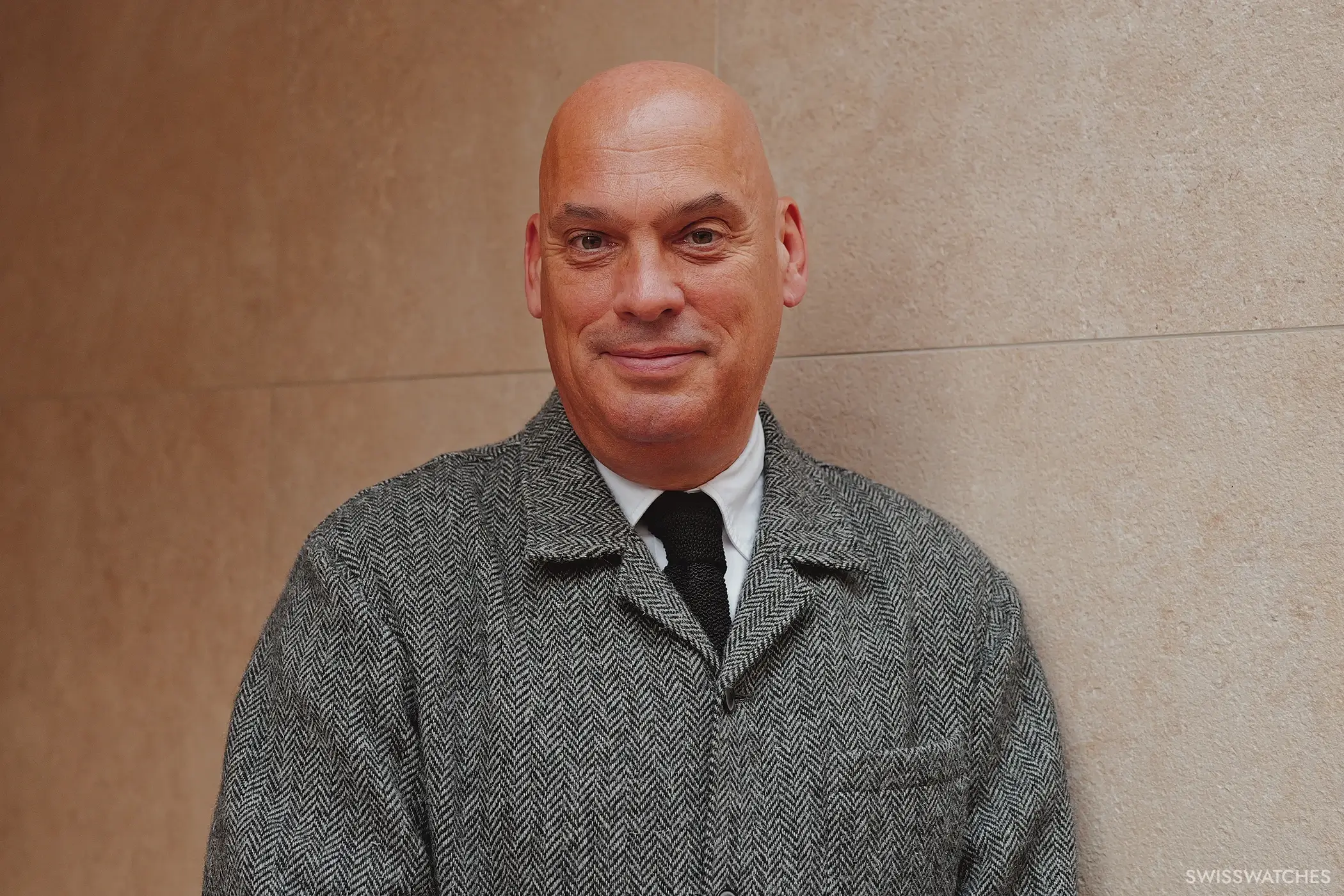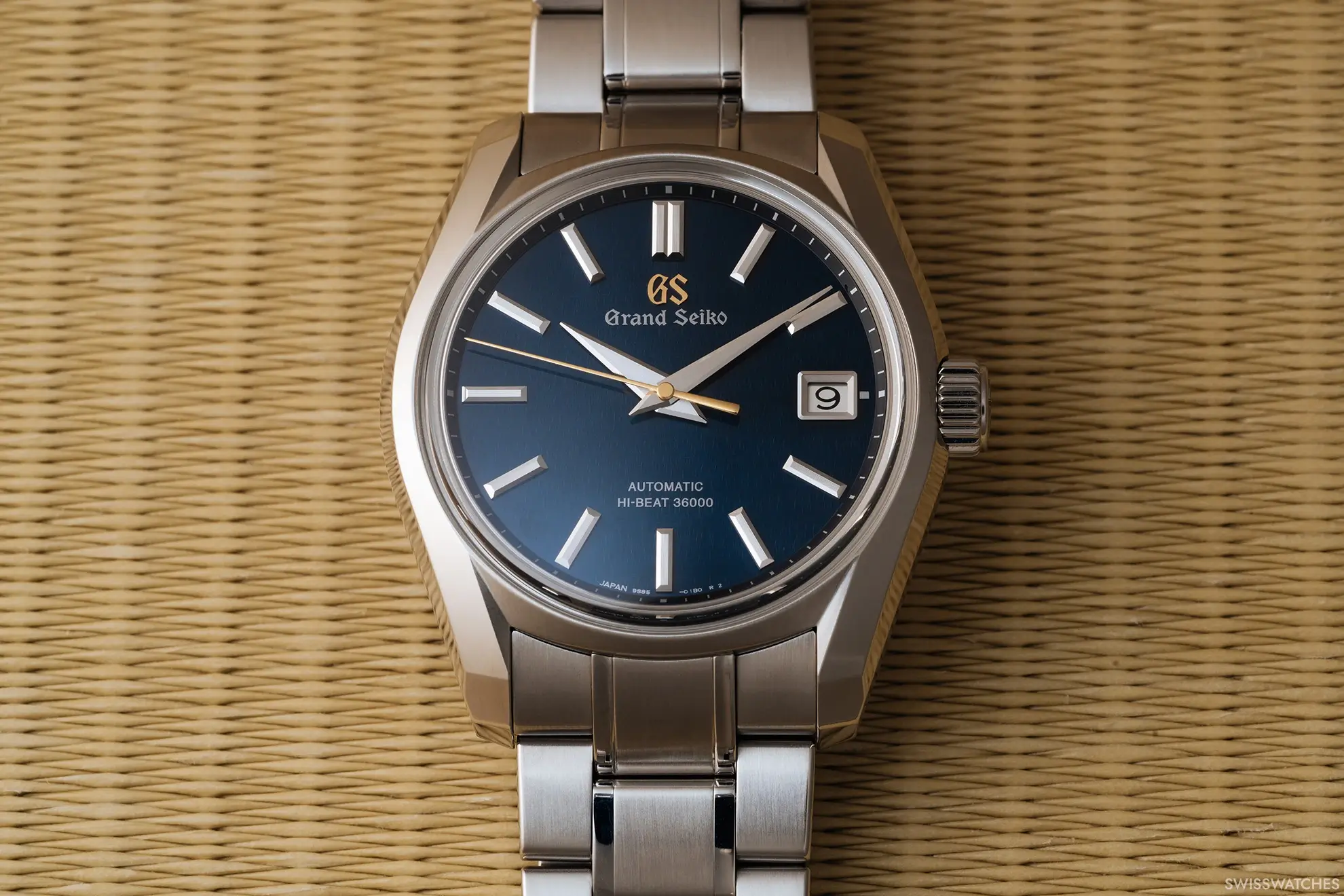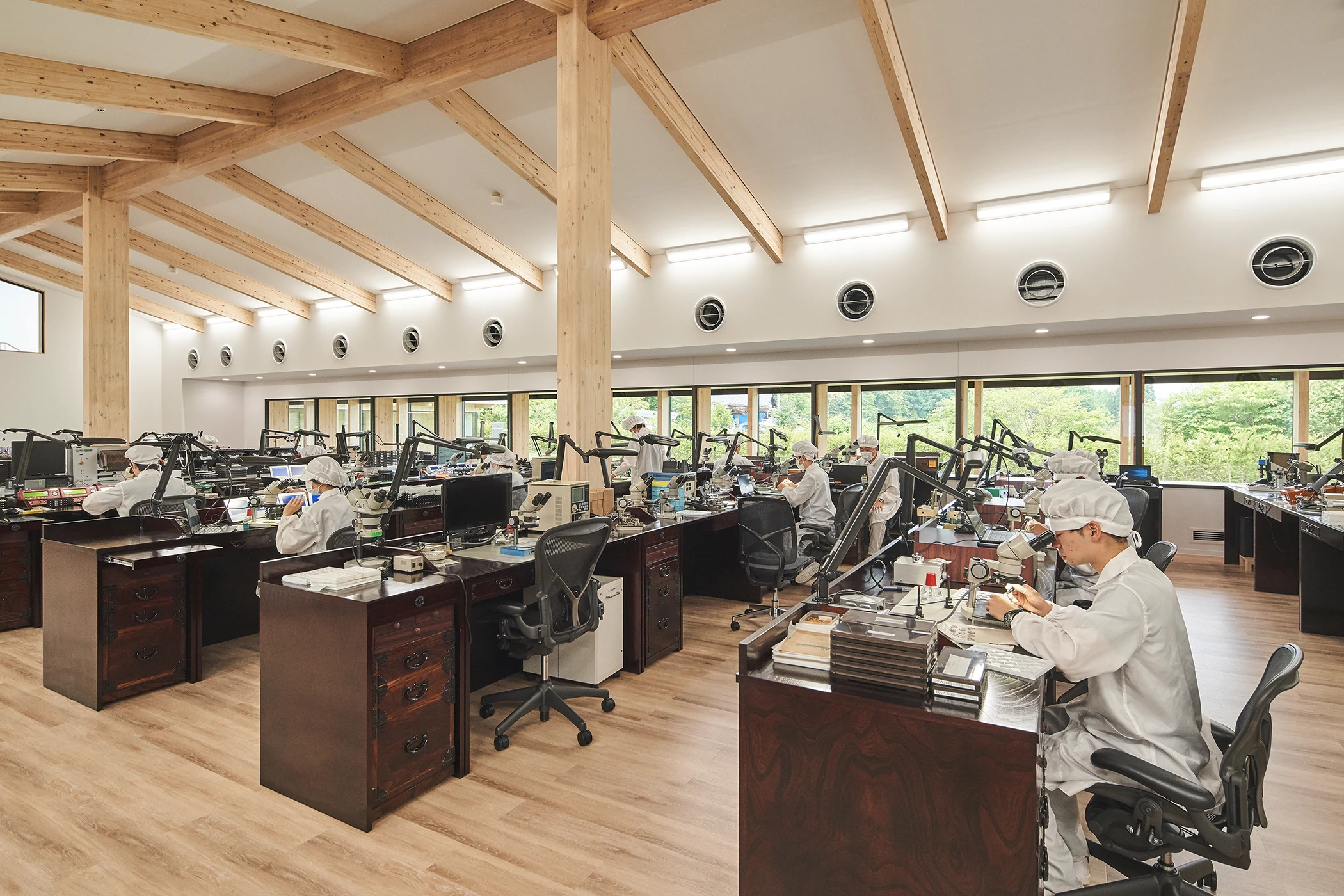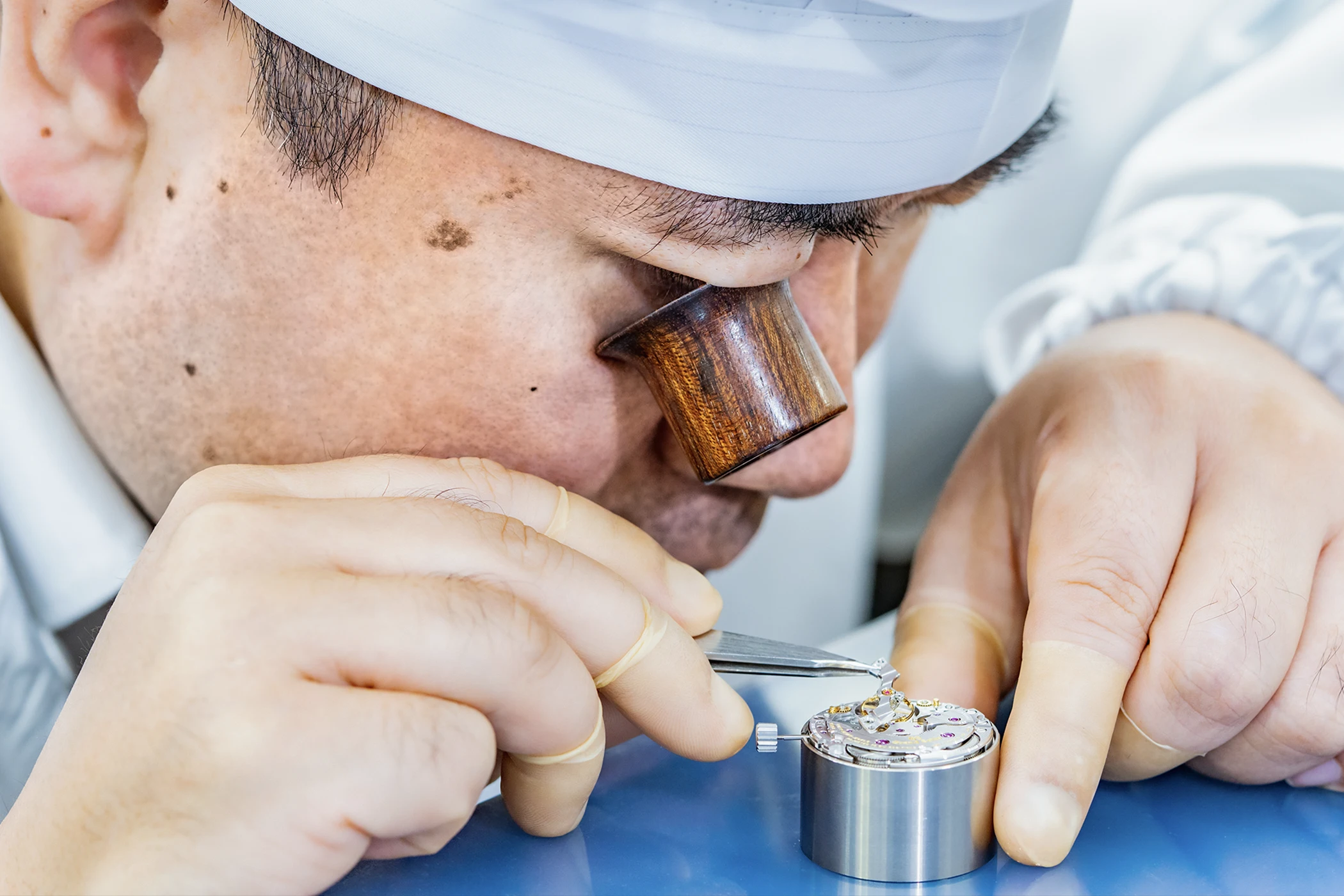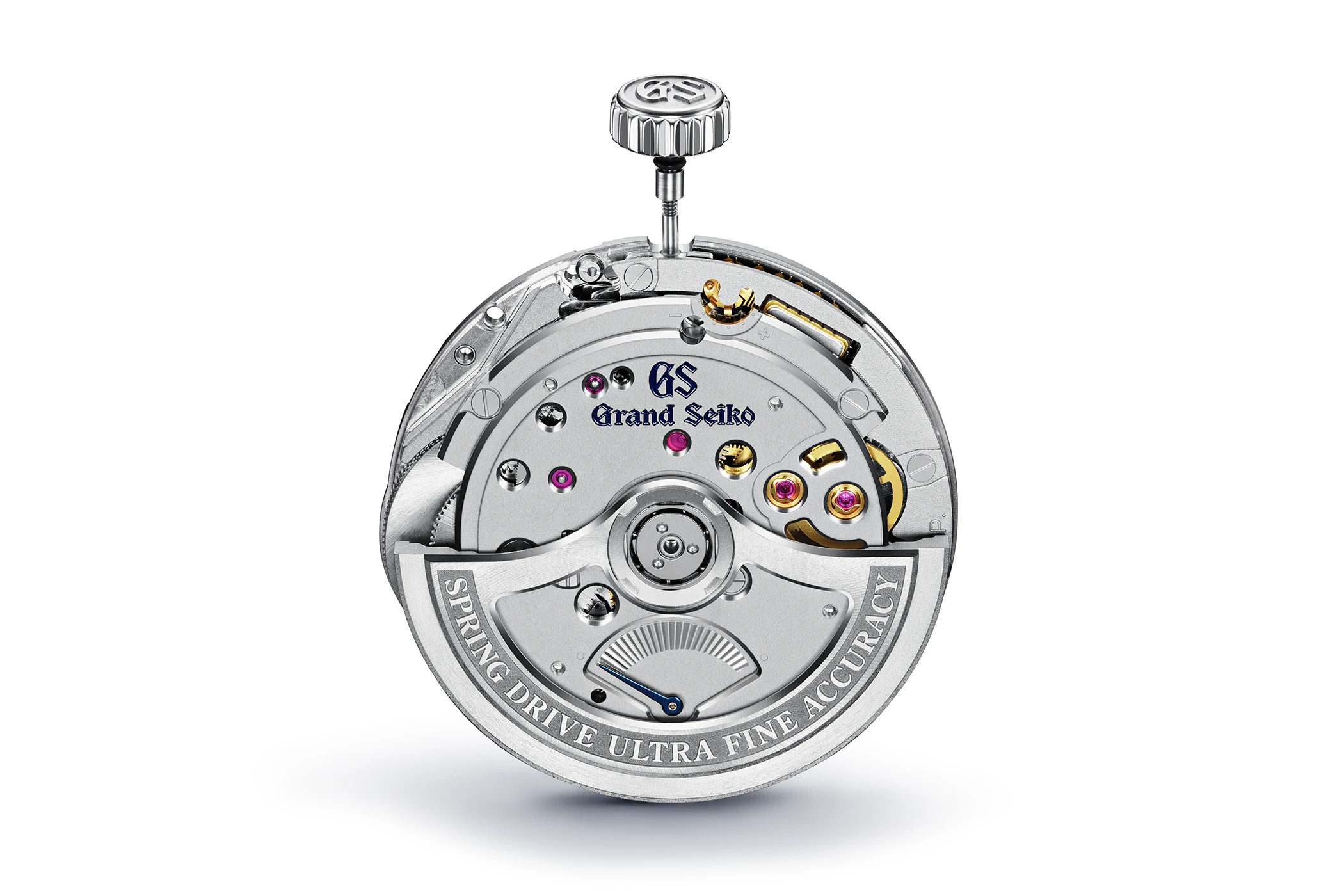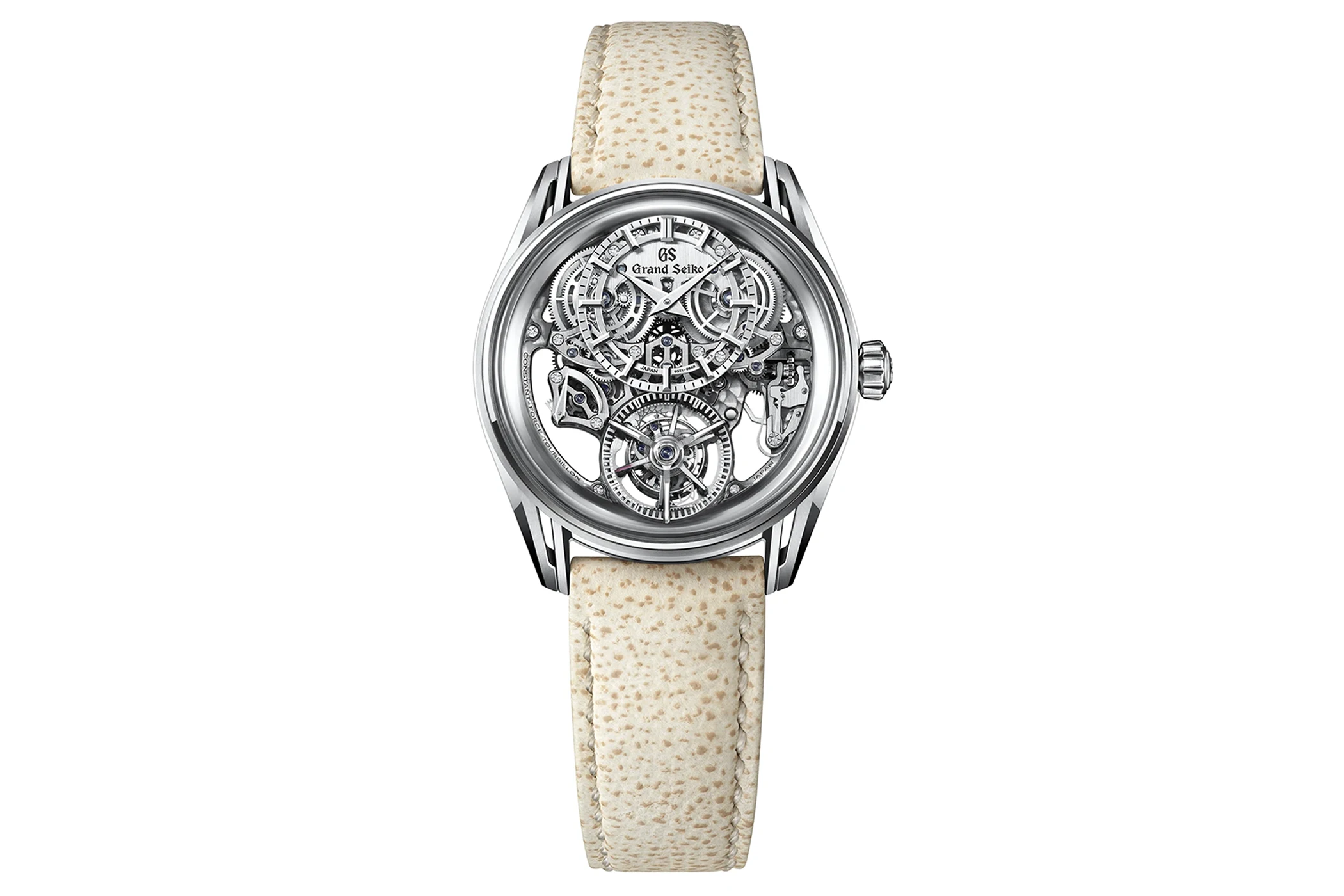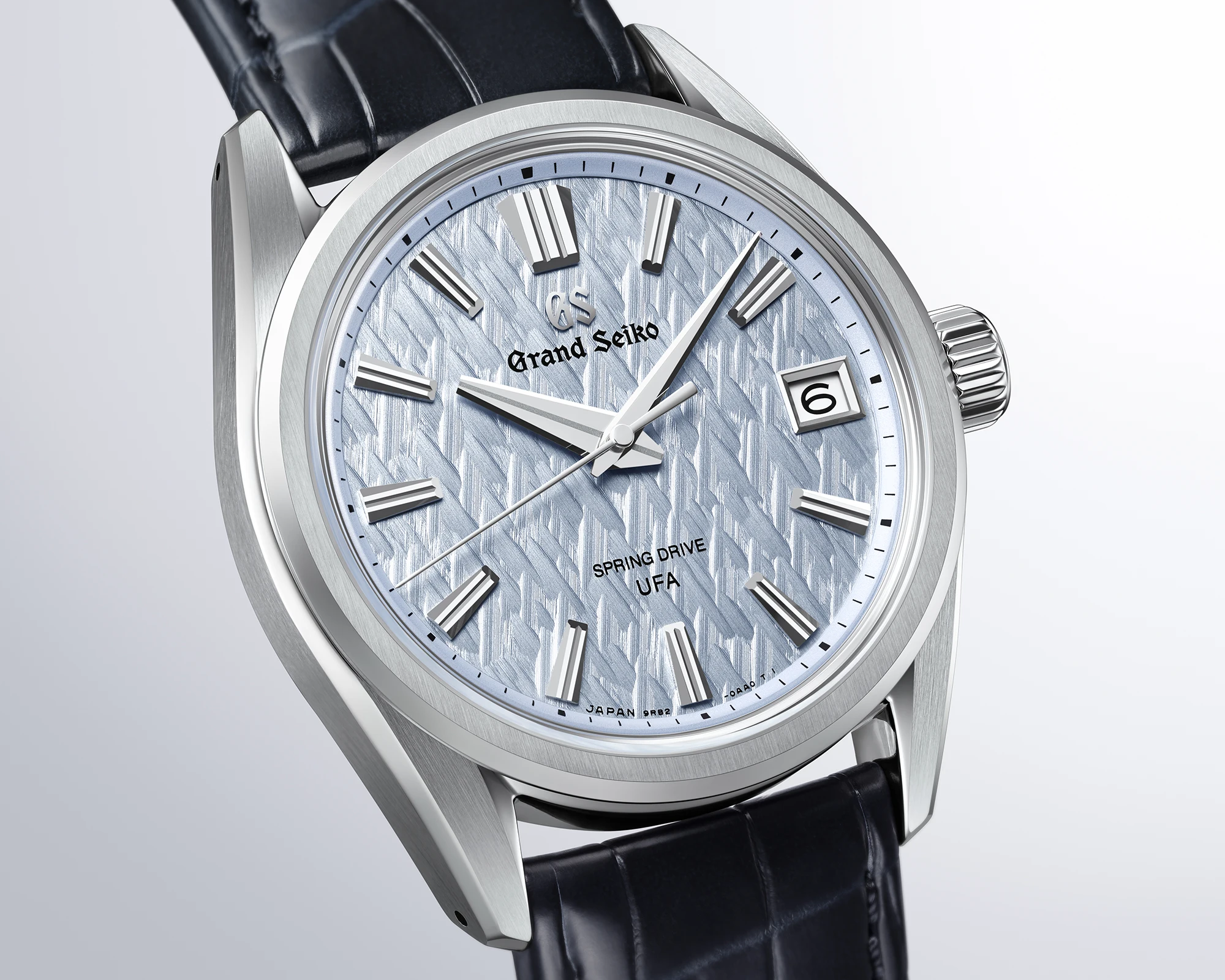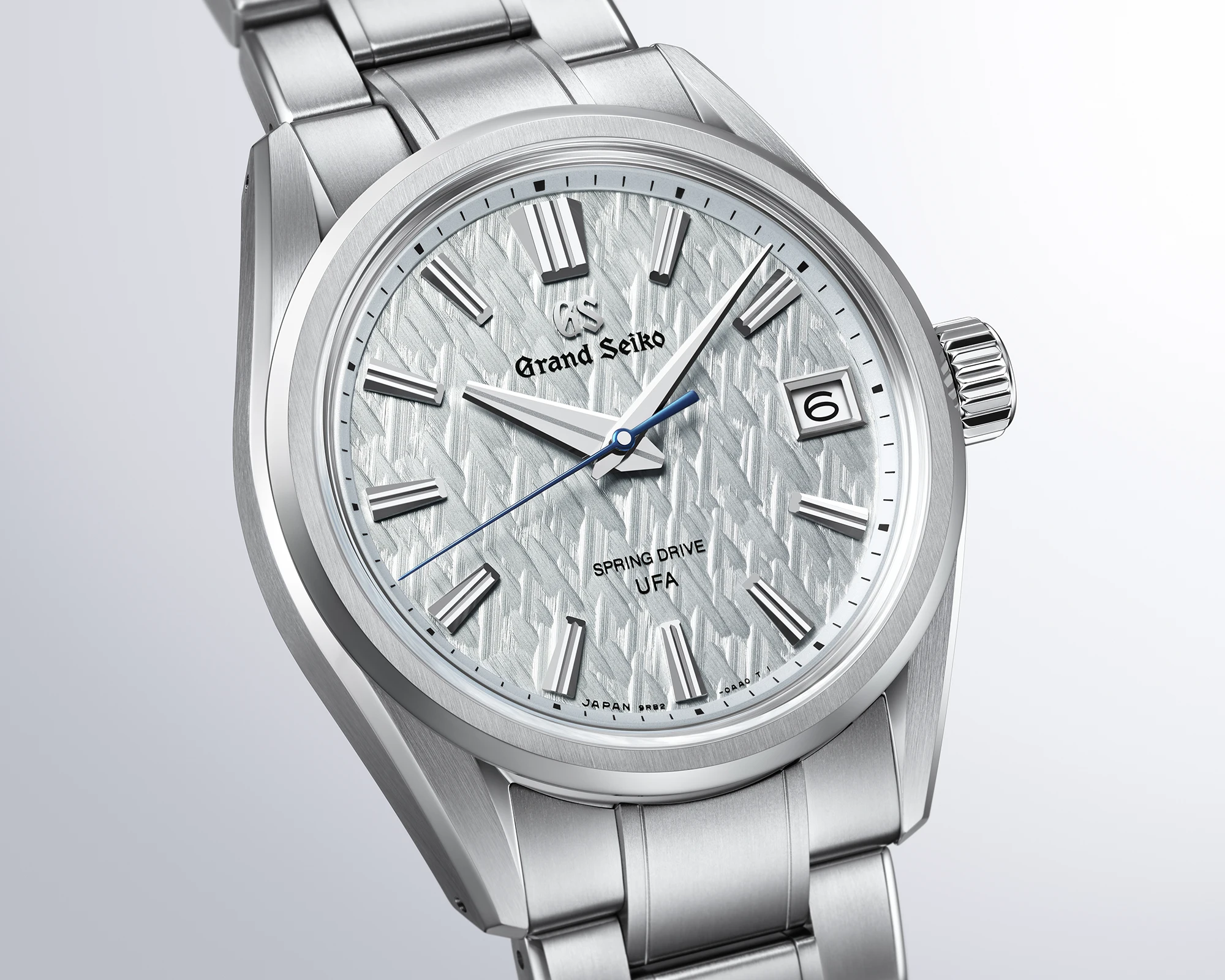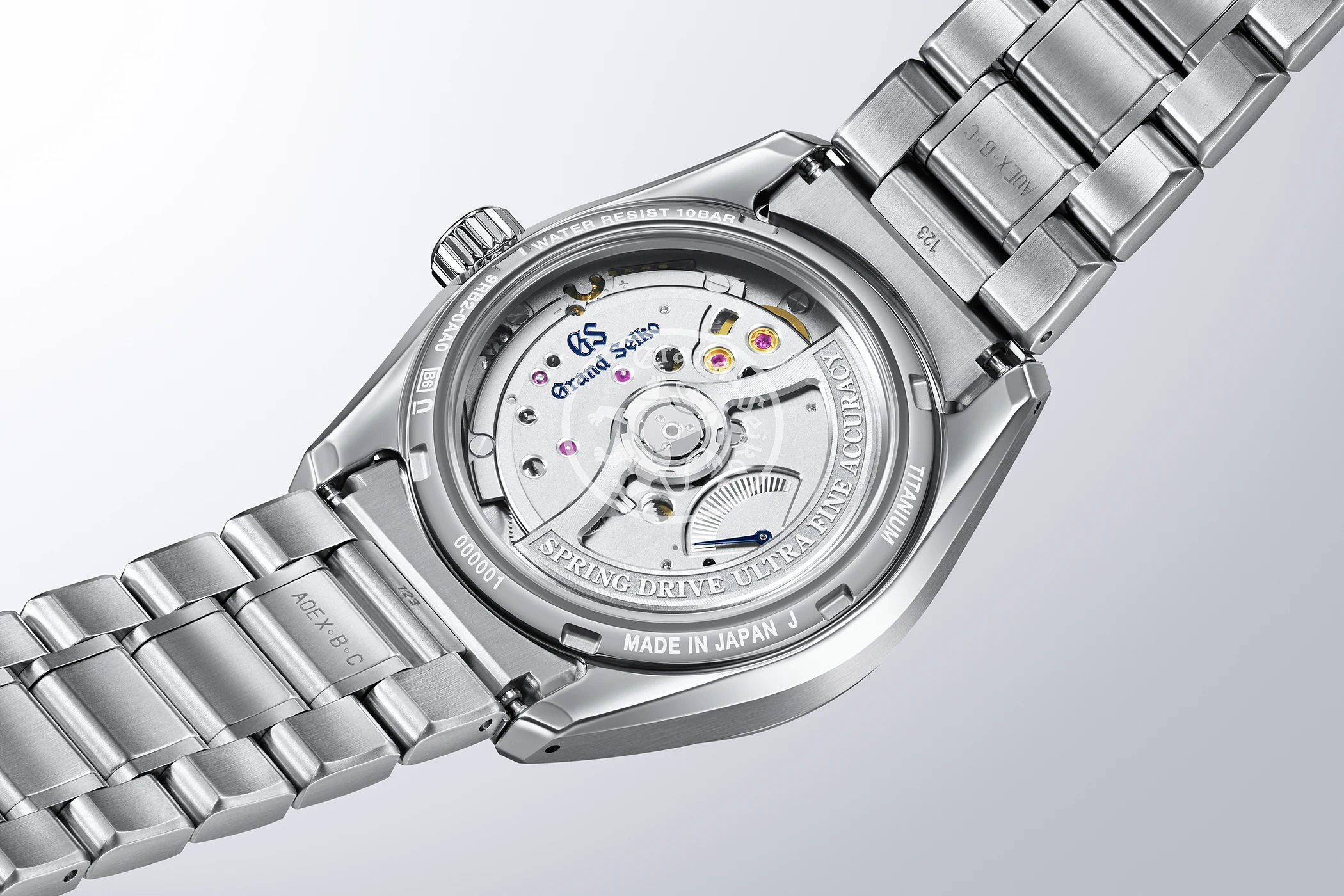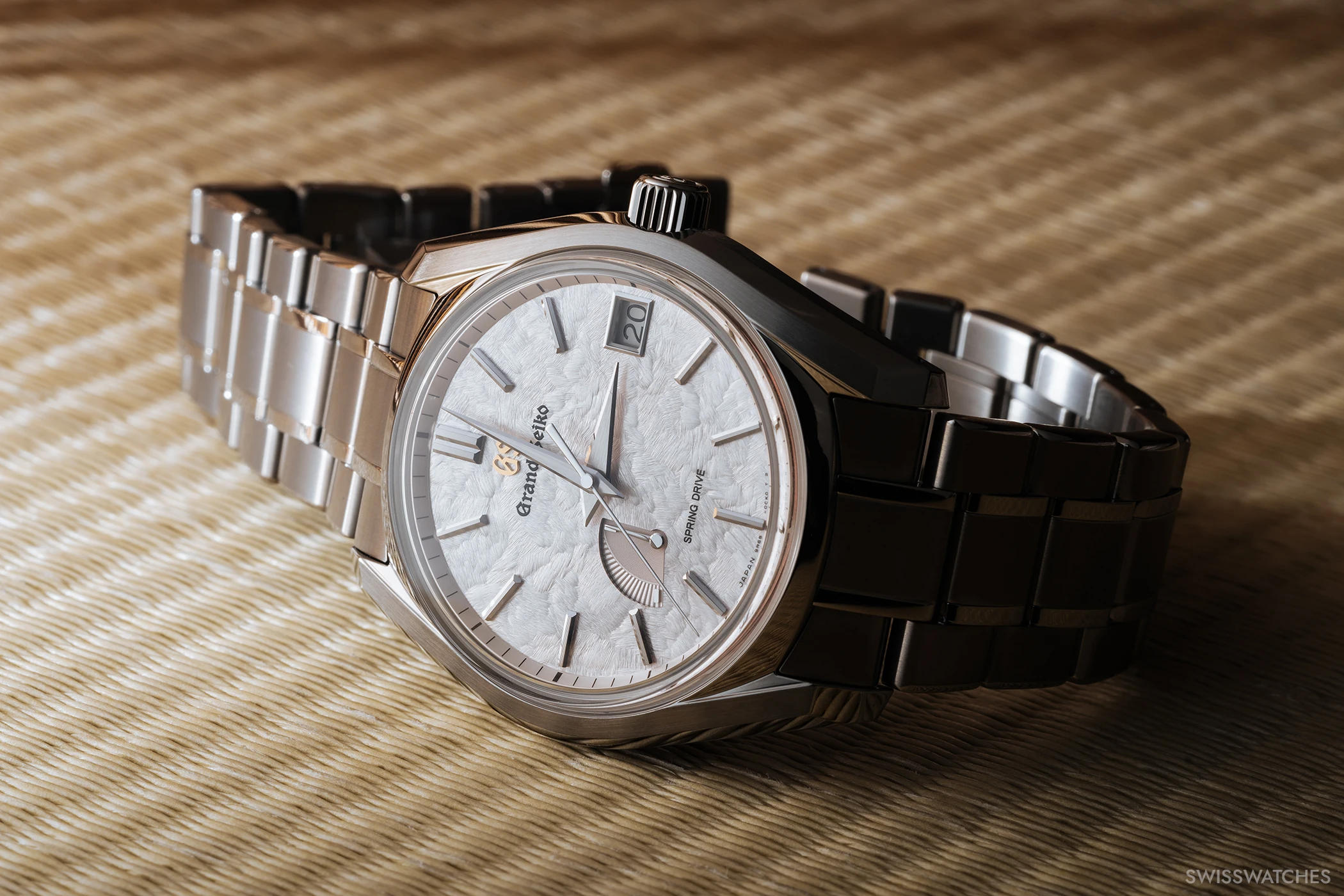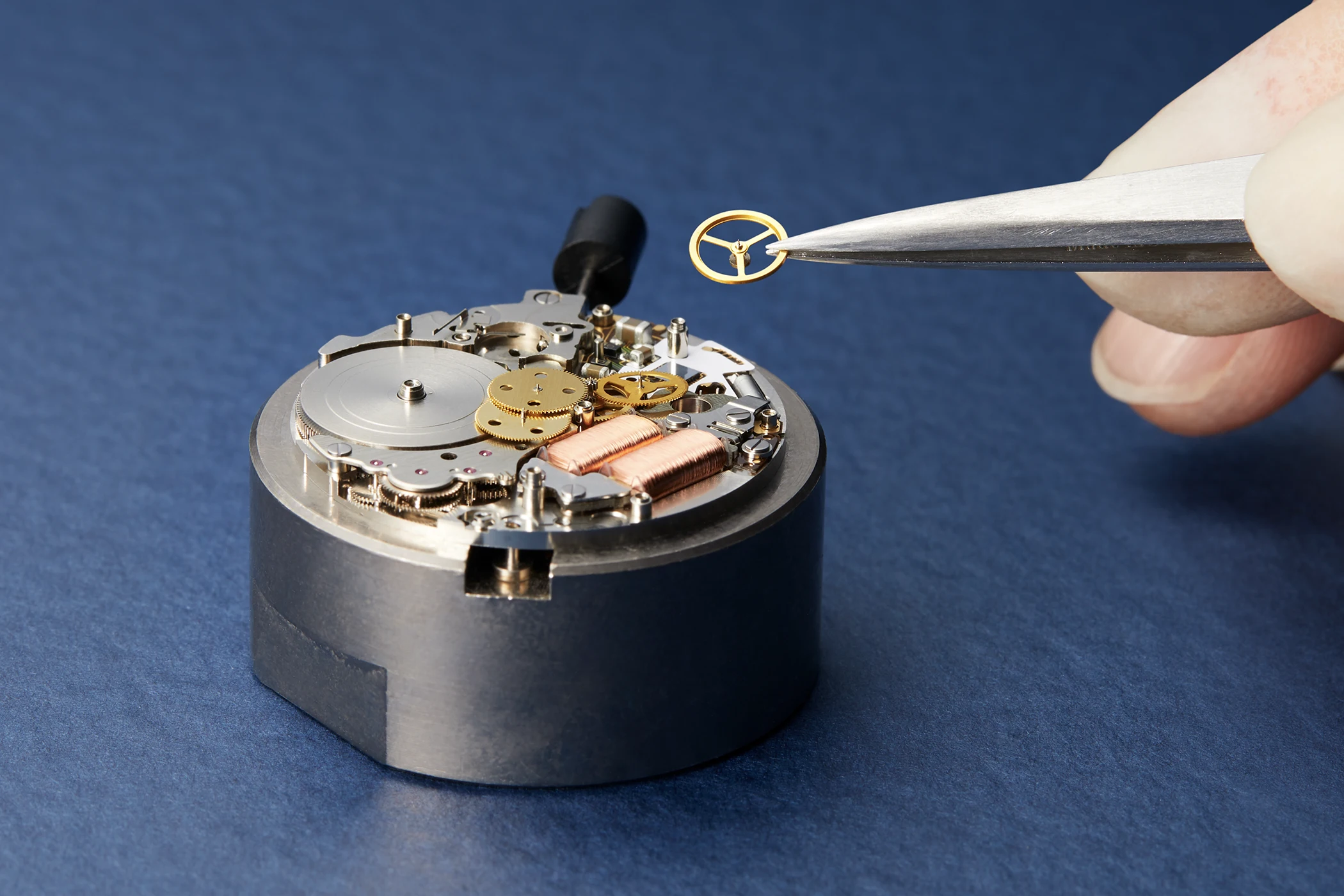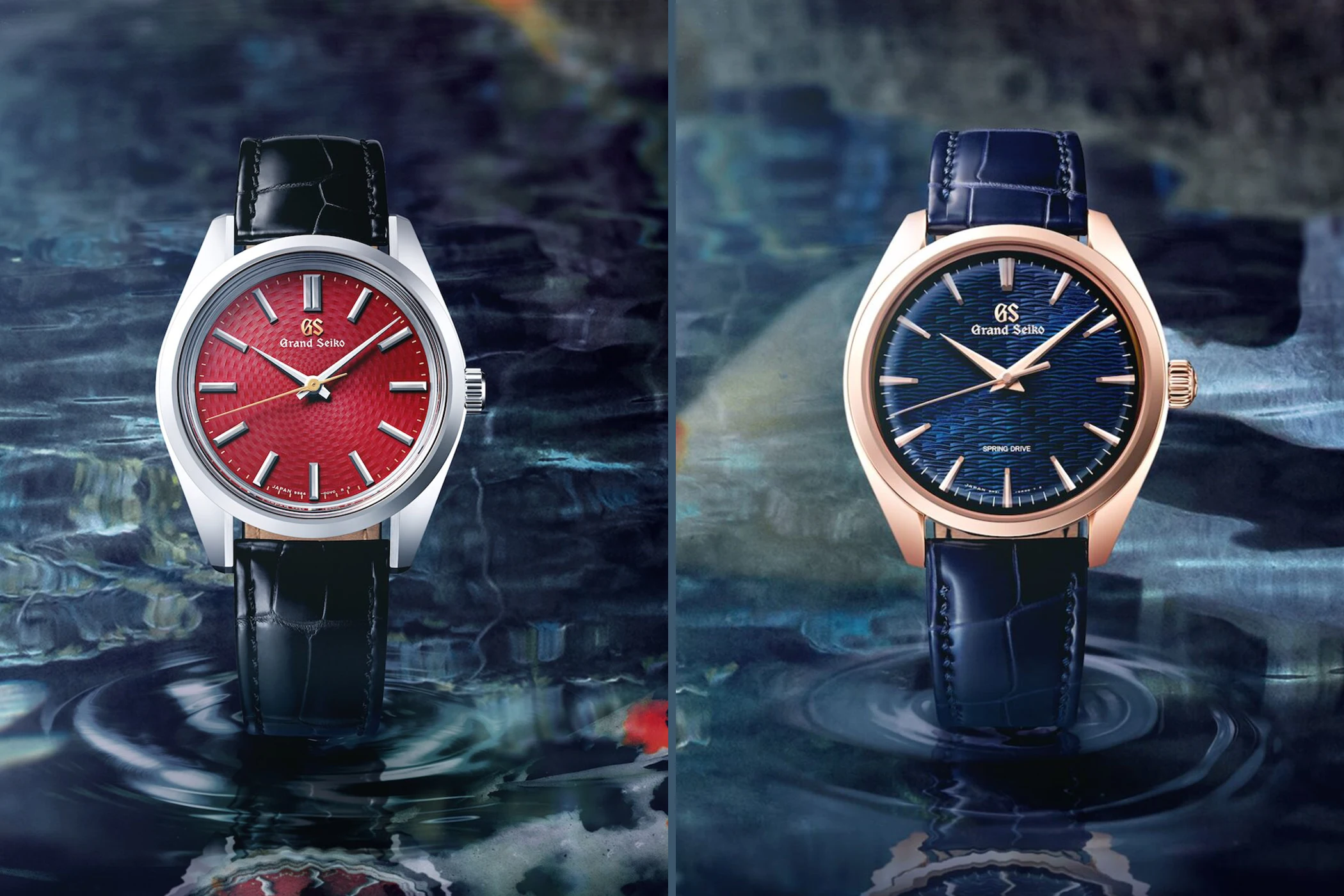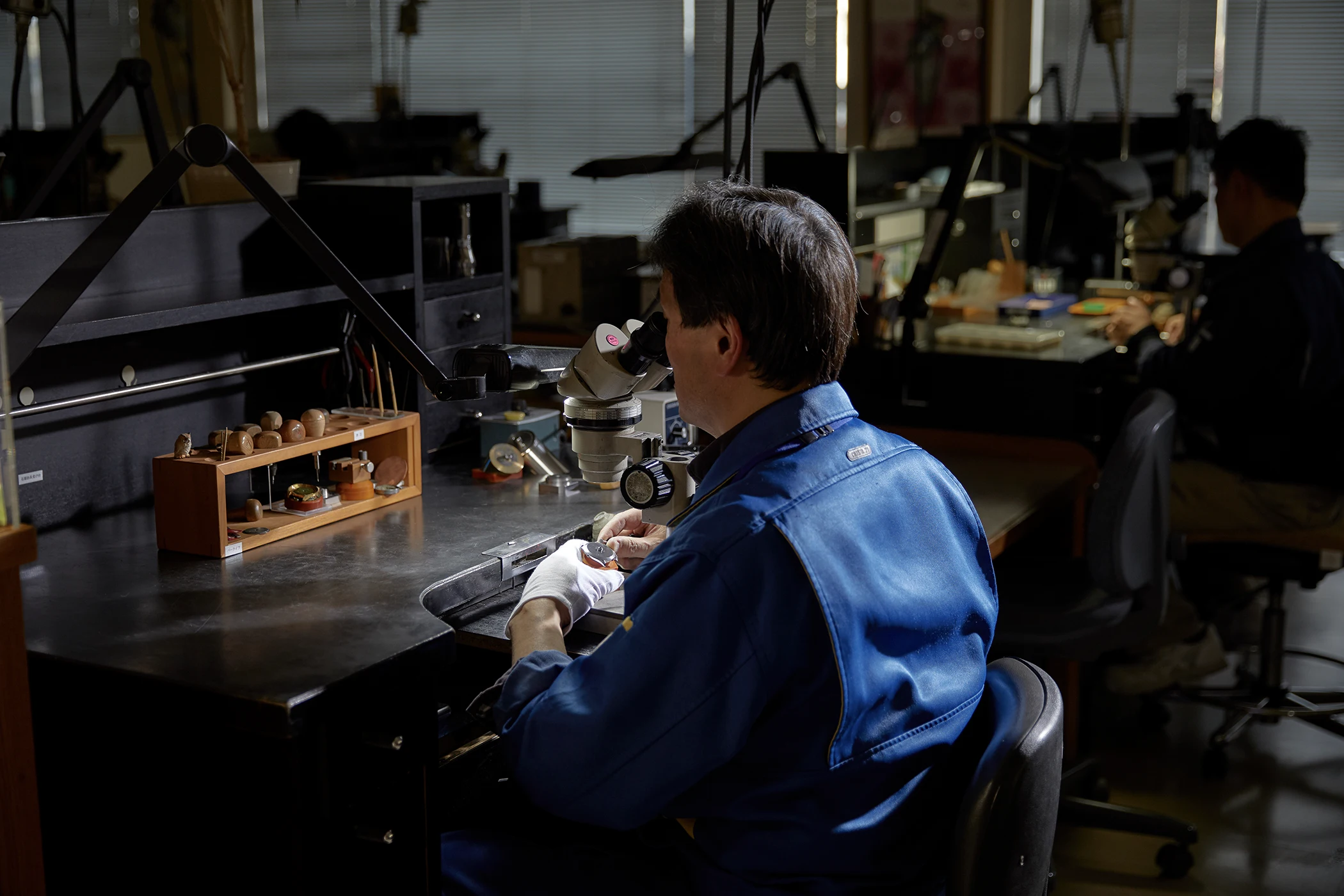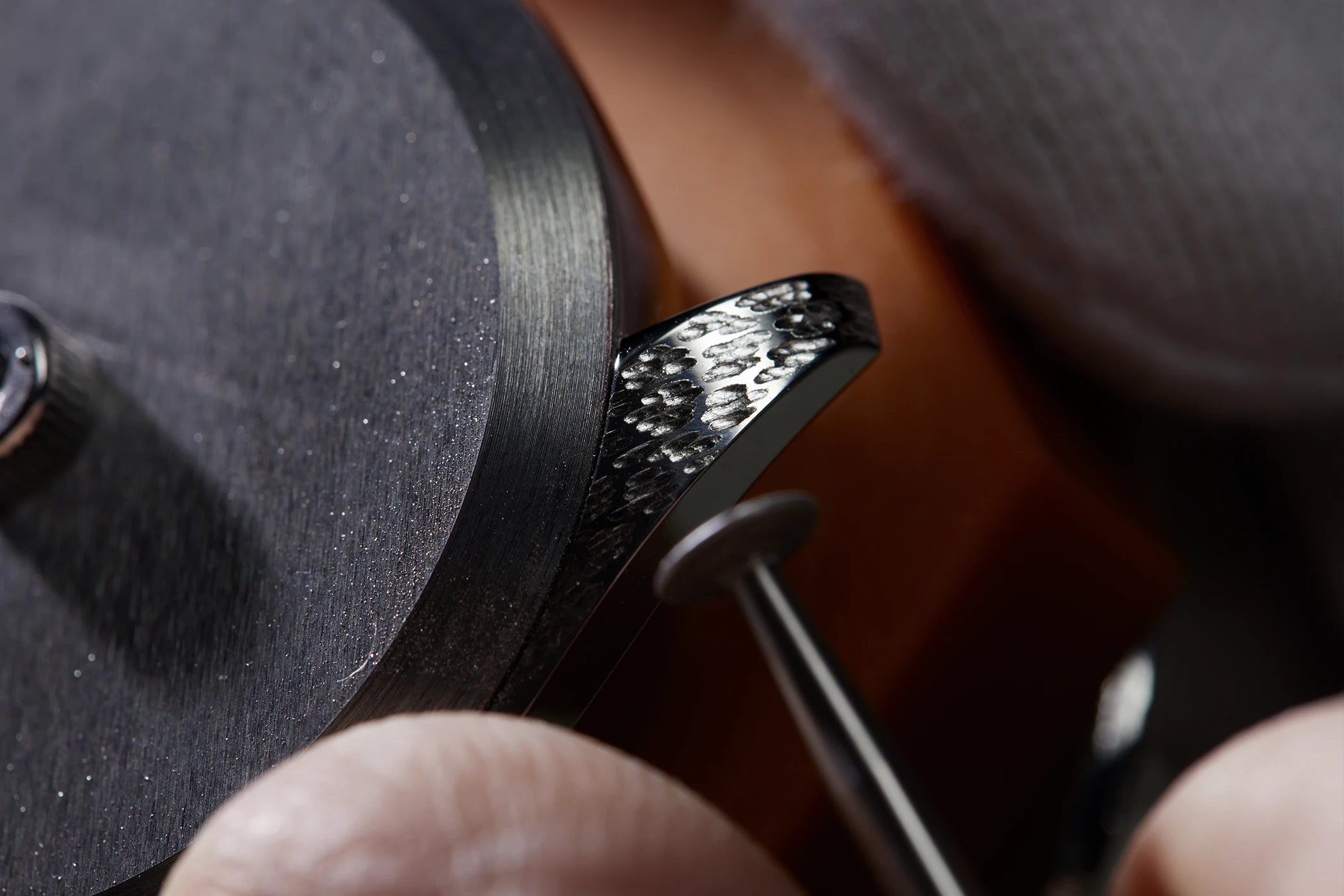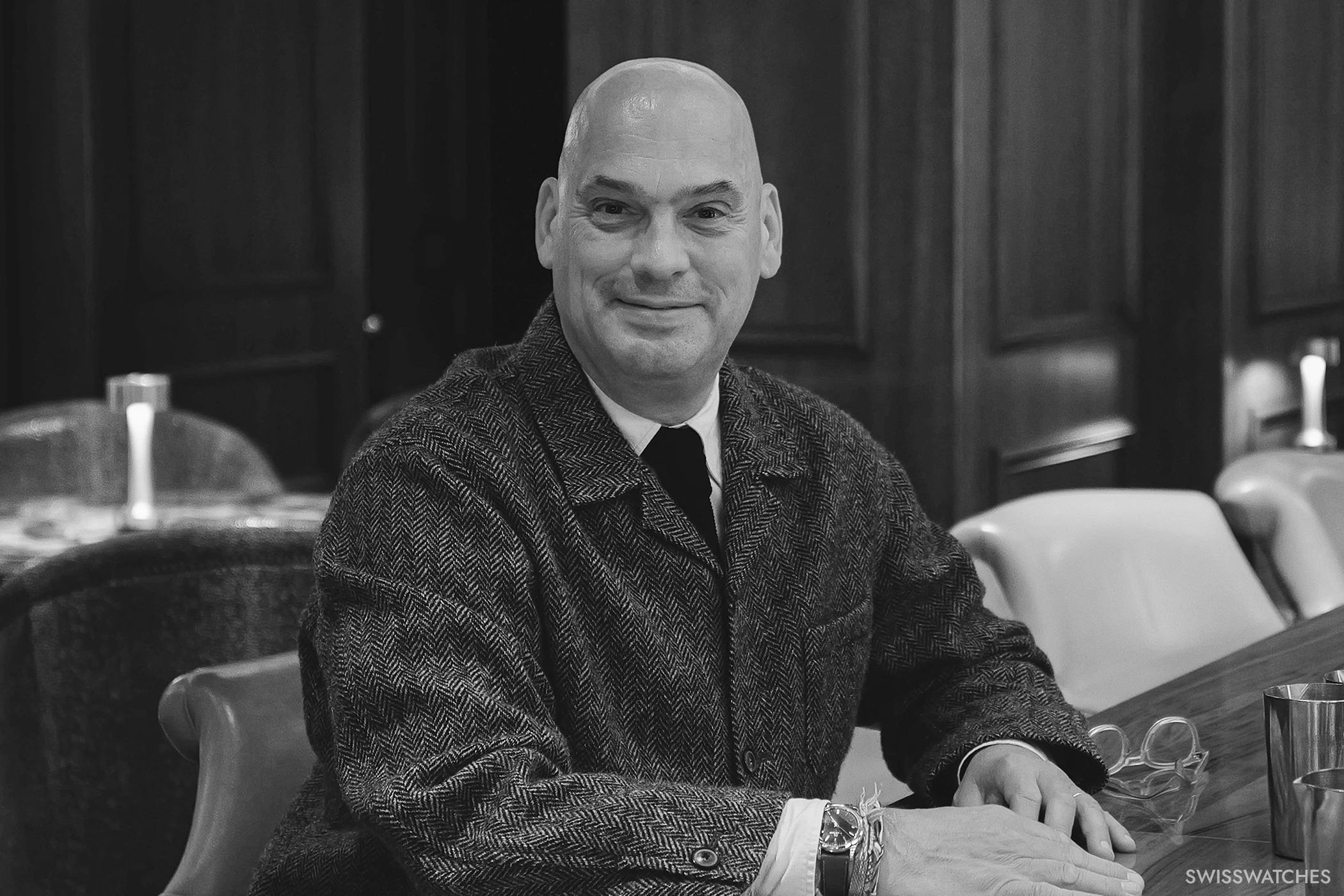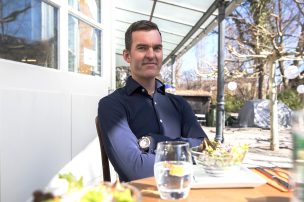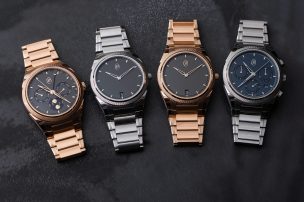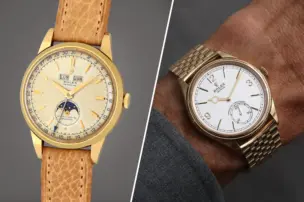
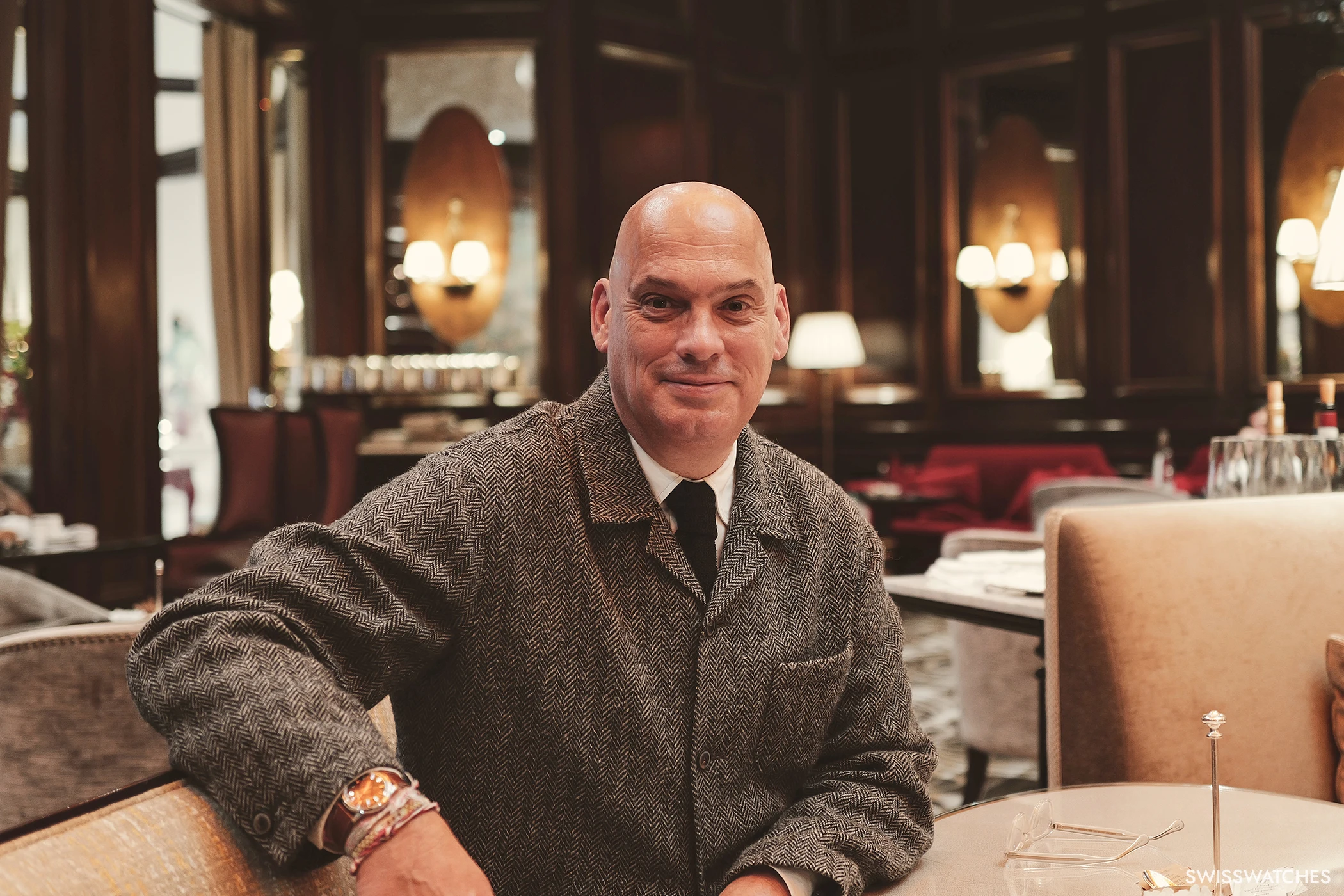
Lunch With: Frédéric Bondoux, CEO of Grand Seiko Europe
We recently met Frédéric Bondoux, CEO of Grand Seiko Europe, for lunch in Munich and spoke with him about his first five years at the helm of Grand Seiko in Europe.
What does a mechanical watch mean to you, and how do you define this fascinating, small world of parts and mechanism?
That is a very good question. When I started my journey in the watch industry back in 1997, I actually used to wear a manual winding movement. It became something very particular to me because I was wearing it every morning when I woke up, and it became a part of my identity – almost very private and personal. I feel it is clearly a part of myself, a part of my soul. This ‘tic tac’ is not just my job; it is something I clearly need every morning; it fits my needs.
We live in a very digital world now, but we still wear mechanical watches. Do you still find yourself looking at your wrist?
I do, very much. I genuinely appreciate the beauty of the dial and the fact that it is something which is made by hand by a human being for a human being. Sometimes having data under every digital aspect is a bit too much at the end of the day, and I truly appreciate that the watch is pure craftsmanship. This emotion for me comes easily from the craftsmanship side.
Could you elaborate on the philosophies driving Grand Seiko?
It is absolutely about respect. When I was travelling to Japan before joining Grand Seiko, I met a watchmaker who told me that he was driven by the moral duty to give the next generation what he received from the past, with something even better on top. This really touched and moved me deeply.
You took up your position as European head of Grand Seiko five years ago. Shinji Hattori, Chairman and CEO of Seiko Watch Corporation, advised you to take things slowly, but surely and sustainably. That is quite unusual advice for managers.
This is quite important to understand that Grand Seiko will be one of the key brands for the future of the group in terms of development, strategic outlooks, and margin. I always use the metaphor of Mr. Hattori giving me like a baby to make it grow in Europe, and this is exactly what is happening. I recently shared this story with retailers, telling them that it is now my turn to give them Grand Seiko as a baby, and they have to raise it nicely and properly in their own retail stores.
Considering that this “baby” is now five years old in Europe, how does it look and feel?
It feels nice. The first step is now done in that we have a very qualitative and streamlined distribution throughout Europe. We are now present in 135 points of sale across 23 different territories. We are here clearly to establish and build a brand for the next generation. Don’t forget that we are only five years old in Europe, even though in Japan the brand is 65 years old and very mature.
When Grand Seiko entered the market, it was largely unknown in Europe. The challenge often lies in the naming, where people might confuse it with Seiko.
It is not a big challenge; it is a big chance. Twenty years ago, Grand Seiko was not part of your portfolio of desired brands because it did not exist in Europe. For the newcomers and the new generation, the brand is now present, and when they are considering new brands, Grand Seiko is a part of it. In five or ten years, when they realise their dreams, they may actually buy Grand Seiko. In that sense, it is a chance because Seiko gave at that time the best of its own to Grand Seiko; it was a true tribute to Seiko’s legacy and craftsmanship excellence.
What impressed you most about Japanese culture, and how important are Japanese values, aesthetics, and philosophy to the brand?
The Japanese are very linked to quality and finish, and there is a lot of value in terms of respect. Remember the first time you stepped out of the aircraft arriving in Japan ; the respect shown by people – from handling luggage to the neatly dressed taxi driver with white gloves – was a shock. This huge respect is very important to us as a Japanese company. The way we convey the message is also quite different; our marketing is clearly driven by the quality of the product, not only by the brand content.
I observed the honesty of the people during my visits to Japan. Does this value also translate into the product in terms of offering excellent value for money?
When I joined Grand Seiko, I saw a review in the New York Times that emphasized the value for money. The article described Grand Seiko as “the watches that cost $5,000 that are worth $50,000”. This was clearly emphasizing the value for money that Grand Seiko is offering compared to our competitors.
How can Grand Seiko make this value possible?
There are different answers. First, we have a small production, between 45,000 to 50,000 pieces per year. Second, we have an integrated manufacture, meaning we control all the margin at different levels, potentially working with more savings than others. Third, we are producing in yen, which is currently quite interesting because the yen is not as strong as it used to be.
Can you quantify the growth in production over the past five years?
I cannot disclose the exact figures. However, the growth was quite important due to two phenomena: forecast (production) and, most importantly, the average price. In Europe, for example, the average price had to jump from €4,500 in 2020 to almost €8,000 this fiscal year 2025. This is due to an improvement of the watches, the calibres, and the novelties we have introduced.
What major technical developments have driven this increase in value and price?
For five years, each year we have come out with a new product development or new calibre development. We introduced a new Hi-Beat movement, a new Spring Drive movement, and then the Kodo came. We also introduced the first-ever chronograph made out of a mechanical movement in Grand Seiko and a 5hz Hi Beat manual winding movement with 80 hours power reserve . This year, we are coming with an absolutely tremendous Spring Drive movement, the Spring Drive U.F.A, which is accurate to 20 seconds per year. I don’t know many watchmaking companies developing so fast and so many new calibres in the last ten years.
The Kodo Constant-Force Tourbillon laid the foundation for sophisticated complications. Does Grand Seiko plan to introduce additional complications, such as perpetual calendars, perhaps using Spring Drive or Hi-Beat movements?
The Japanese are very secretive on this front. However, we have two important facts. We opened an atelier called the Atelier Ginza, dedicated just for Kodo making, directly in Ginza at the heart of Tokyo. Only three people work there. This is clearly a statement that shows something will happen there. The Kodo is surely a gateway for something to come in the future.
To what extent does Grand Seiko listen to the European market, or are the Japanese strict with their own vision?
We have the willingness to become the first global luxury Japanese brand. Most major luxury brands are European. The reputation and image need to be strong in Europe. If Grand Seiko is strong in Europe, it will be recognised globally as a luxury brand, not only in the US or Japan. Europe is a key market, and the more relevant we are here, the more powerful and successful the brand will be outside Europe.
Precision is clearly key. Where do you see the advantages over your competition in this regard?
Precision is one of our key elements. Back in the late 1960s, we were already one of the best in chronometry contests in Switzerland. When Grand Seiko was created in 1960, it was based on four pillars, including beauty, precision, legibility, and durability. This chronometry issue will always remain a pillar. We have a mechanical Spring Drive watch that is precise to 20 seconds per year. I guess there is no match for this in big production at that price level.
What is the current trend regarding watch size?
The trend is clearly between 34 mm and 38 mm. We will soon release pieces that will be 26 mm, which will come in November. We will also be targeting the female audience a bit more.
Which models are the most popular in Europe currently?
Historically, the Snowflake is one of the most important bestsellers. Since we launched the Shunbun(SBGA413), it has been by far the bestsellers in Europe. These colours and the titanium case are becoming an icon and a standard for us. Classical mechanical GMT pieces, like the SBGM221, which has a very reasonable price of €5,200, are also bestsellers. Furthermore, the Evolution 9 collection, created four years ago for the new generation, is now almost accounting for 22% of our turnover in Europe.
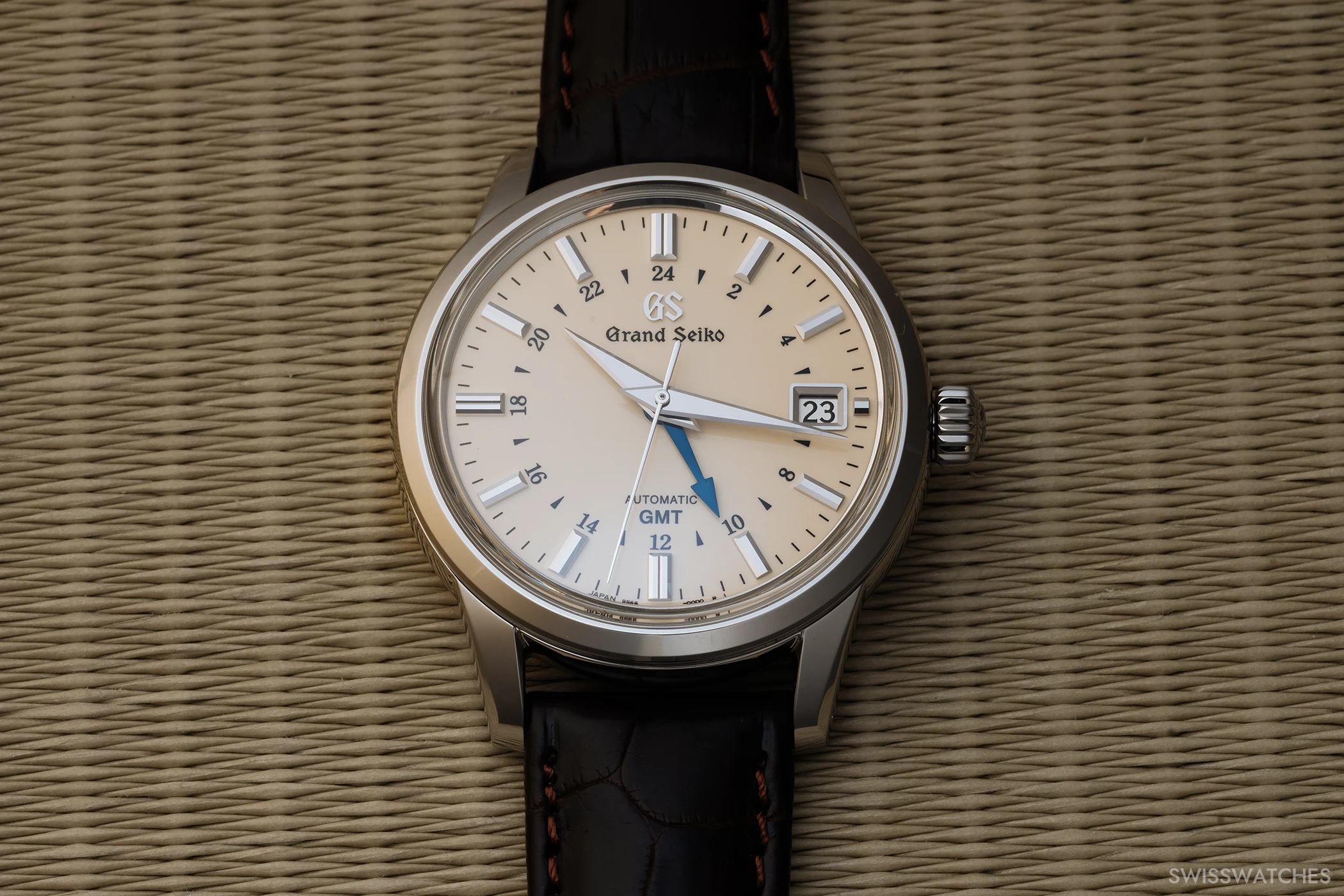
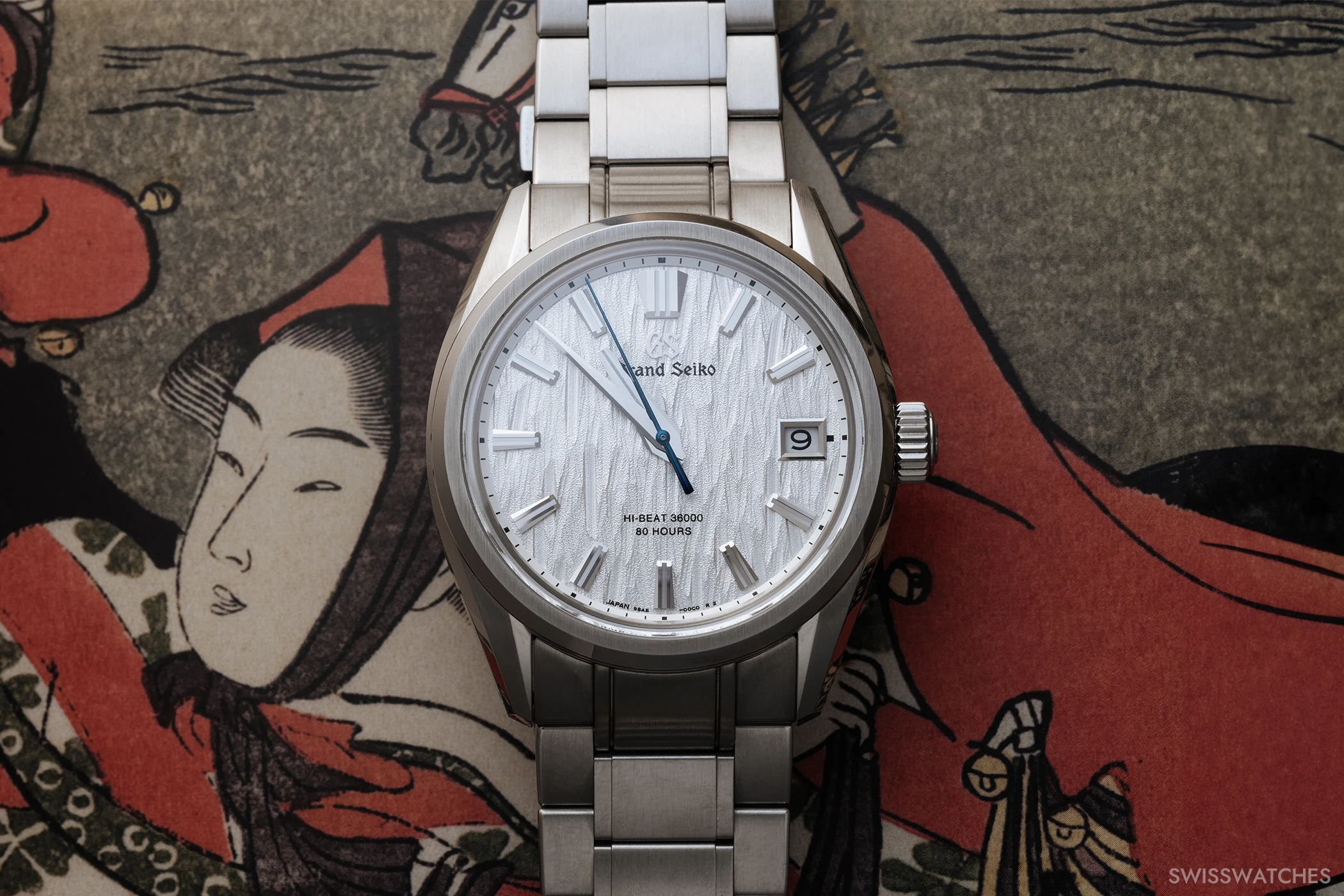
And in terms of materials, which is the most popular next to steel?
Titanium, specifically high-intensity titanium. This is due to the wearability and lightness, and it is a strong element in our DNA.
Do you think Quartz technology and mechanical movement are compatible?
Yes, it is very complimentary. Quartz watches, developed in the 1960s, strongly changed the picture of the industry. While my generation sometimes associates quartz movement with the affordable plastic watches that saved the Swiss industry, the quartz movement in Grand Seiko pieces is very high-end technology, absolutely stunning and beautiful.
You have released limited editions exclusively for the European market. How much freedom do you have in Europe to tailor specific models?
The Japanese are very open to these ideas. However, if we want to build a global brand, we have to be consistent. We must take care that limited or regional editions do not jeopardise the whole brand. When I was starting the operation in 2020, limited editions accounted for more than 15% of sales in Europe; now, it is less than 6%. We need to use this tool with parsimony.
How do you maintain the relationship with existing customers in Europe?
Boutique events and trade events are key elements to keep the relationship. We also have the GS9 club, which gathers a lot of Grand Seiko owners. “9” relates to the figure for excellence in Japan. Activating our GS9 club members throughout the territories in Europe is one of the next important steps for us. We currently have close to 1000 members in Europe.
How important is after-sales service, and what is the typical repair time?
The after-sales service is very much under control now. We have one service centre based in the Netherlands, where we have five dedicated watchmakers. 90% of our services are done there; 10% are sent back to Japan, for example, for polishing. We are happy to say that we have an average lead time of around three weeks (or 25 days) from inbound to outbound.
Grand Seiko finds itself in a competitive environment with established Swiss luxury brands. What is your strongest unique selling point that differentiates you?
I always say that we speak the same language as the Swiss but with a different grammar. If you go to Shinshu, you will see that everything is integrated, but the intervention of the human being is very present at Grand Seiko. We have a different savoir-faire and a different poetry compared to the big groups in Switzerland that are often CNC-operated. We are clearly fuelled by the values of quality and emotion Made in Japan. We are much more driven by craftsmanship. Our watchmakers are mature, experienced artisans, and the product contains emotions inside.
What are your biggest goals for Grand Seiko in Europe over the next five years?
The first step, distribution building, is done. Now we need to feed our retailers with information and training to convey the message of the quality and emotion of the brand. In terms of turnover, we have a very important target. My objective is that in 10 or 15 years, my sons, who will be 30 years old at the time, may consider buying Grand Seiko amongst beautiful brands. I am building this brand for the next generations.
How do you see the future of the mechanical watchmaking industry in general?
We experienced a huge boost in the last 25 years. We are now coming to a more mature market where the product content is much more valuable than it used to be. We are seeing the emergence of new independent brands globally. The market will be much more open to different visions of watchmaking excellence. New blood brings new energy and a new future, so I am quite positive for the industry.
